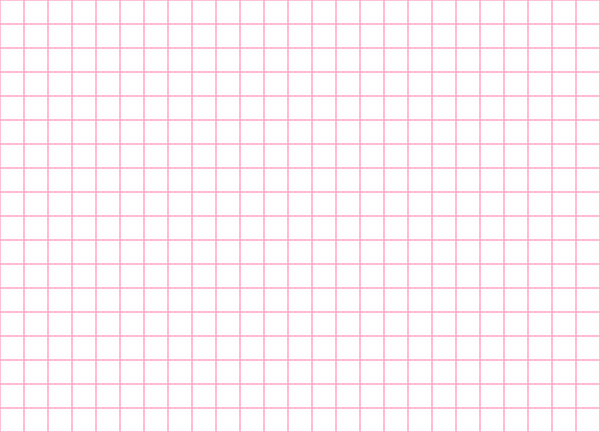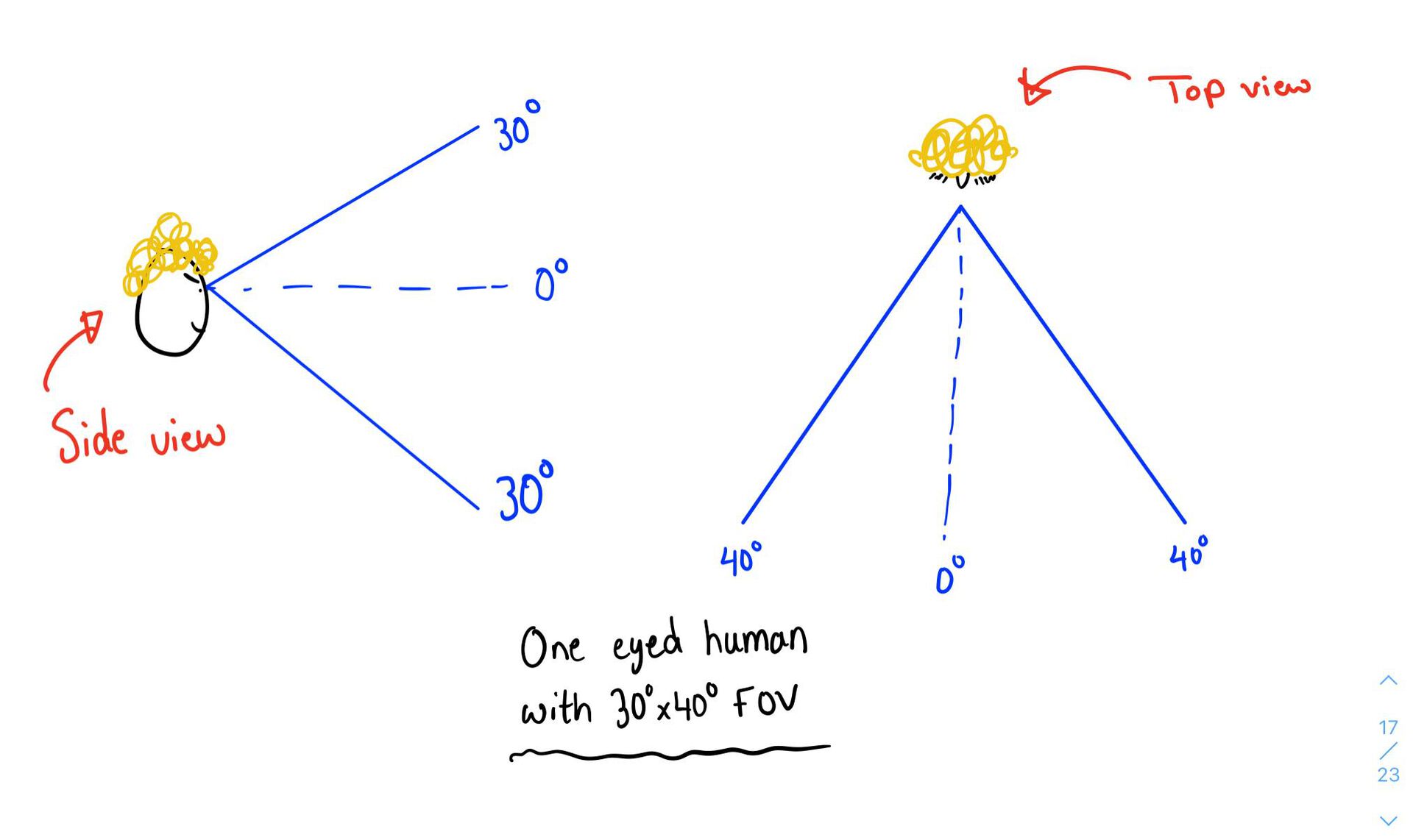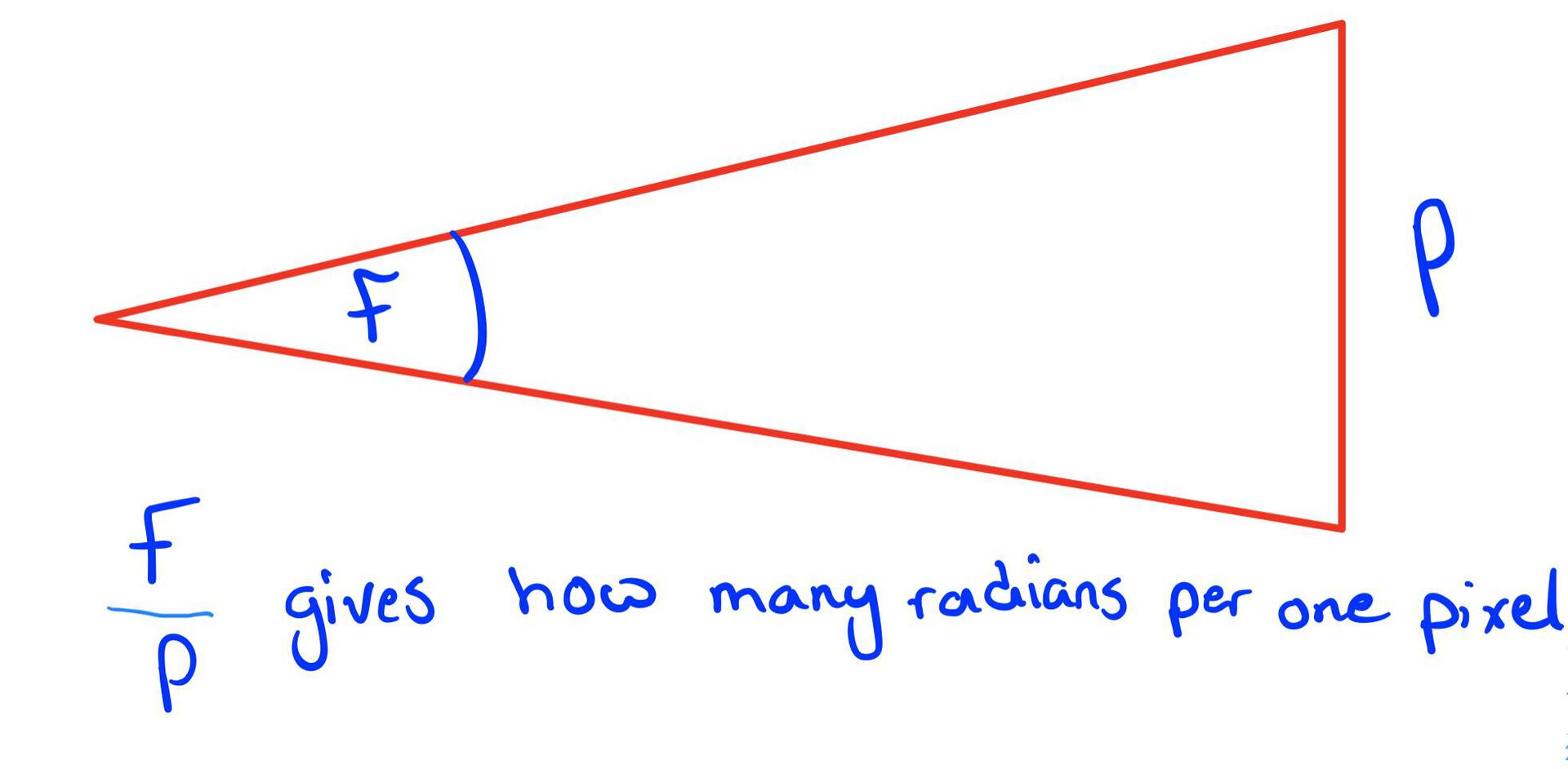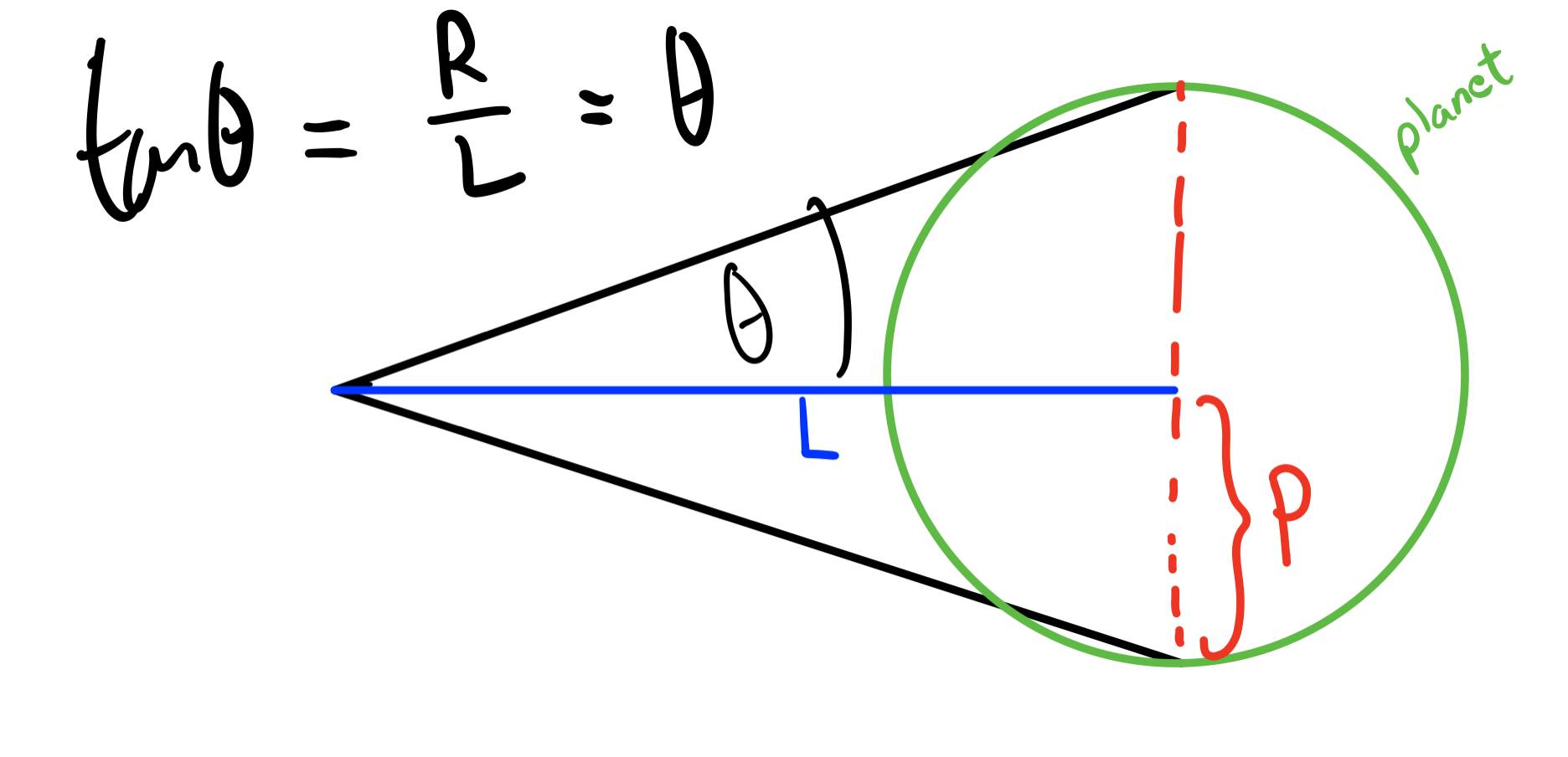We're taking a closer look at how we'll be doing things, not step by step but you'll get the general idea.
Here are the equations we'll be using:
\(F= \dfrac {L}{4 \pi r^2}\ \ \ (*)\)
\(F = \sigma T^4\ \ \ \ \ \ (-)\)
Forgot what these equations meant? No problemo! Go here
First we will assume that the star is a stable black body and find an expression for the flux emitted at an arbitrary distance r. We'll need to use equation (*) but the first obstacle is finding L. We use a neat trick to find L, since we know the Flux at the surface of the star, we can solve for Luminosity. In (*) we see that \(L = F\cdot 4 \pi r^2\) and we have F from (-). After finding L we just insert it in (*), doing that and simplifying a tad bit we get:
\(F(r)=(\dfrac{R_*}{r})^2\sigma T^4\)
Where \(R_*\) is the star radius and r is the distance. Pro tip: when you get an equation, try to interpret it, for example in the expression above, if the radius if the star is 2x larger we get 4x flux, if the temperature is doubled, flux is 16x. This gives you a better understanding and deeper intuition.
We need to find the total energy received by a planet with radius R at a distance r from the star. For the sake of simplicity we'll assume that light rays received are always parallel. Well, all we need to do to find total energy is multiply our flux by the area hit by the flux. Just as how you would multiply velocity dr/dt with t to find total distance. One detail that can be overlooked is what is the area hit by the planet? You might think that it's the surface area of a half sphere, but you'd be understandably wrong. A neat way to see it is, to shine a light on a sphere and see what area its shadow forms. I will refrain from showing you a figure, because I want you to try yourself, find a spherical object and shine a flashlight on it and make sure the flashlight is at the same height of the sphere and pointing to its center, then check what shadow you get, trust me you miss out on so much if you don't try this. However, if you're not able to, the area is a circle.
So now we multiply our equation (1) with the area of a circle with planet radius \(R_p\) and we get the total energy per unit time.
\(F(r)=(\dfrac{R_*}{r})^2\sigma T^4 \cdot \pi (R_p)^2\)
For the last part, stay with me we're getting close. We have already established that the energy coming out of the planet shall be equal to the energy coming in, we can then set up the equation where flux in is equal to flux out.
\((\dfrac{R_*}{r})^2\sigma T_*^4 \cdot \pi (R_p)^2 =\sigma T_p^4 4 \pi R_p^2\)
Solve for \(T_p\) and you get
\(T_p= T_*\sqrt{\dfrac{R_*}{2r}}\)
Isn't it interesting how we don't have radius of the planet in the final equation? Well that was all the mathematics.
What comes next? Good juicy results. I will take the last equation we derived and set in values for r that I had obtained when I modeled the planets in orbits, since r depends on time we can then model planet surface temperature as a function of time, I just insert the r values and plot it against time. More detail for nerds: I make a loop that takes the N amount of r values, that are relative to the sun, and calculate the temperature for each N value I have for r, and repeat the same process for each planet. When I plot, instead of plotting temperature as a function of r, I plot temperature as a function of the time which r depends on. It's a crude algorithm but it gets the job done.

The temperature is oscillating as expected, as the planets get closer and farther while orbiting the star. We have different frequencies, and we see that the the closer you are the higher the frequency is, which should make sense because it takes longer for the faraway planets to complete a full orbit thus a full oscillation in temperature.
The most important thing to look at in this plot is the area between the two dashed lines, which is what we decided was habitable zone. Habitable zone is between 260-390 Kelvin, our model for the habitable zone is based on
whether liquid water can be found on the surface, for reference, the earth has an average temperature of 288 Kelvin, the planet I'm on has temperature around 330 K, that's 56 Celsius on average, so yes I wasn't joking when I told you it's hot here, my body has adapted tho, my skin has become much darker, my sweat glands are much more efficient and my eyes are now brown after hundreds of years.
As usual, we have to try to see if our results make sense the best we can. We don't have an analytical approach here but we can try use earth's known temperatures and compare it against our models. The average temperature of earth is around 288 K if we instead try to insert known values for earth in this equation
\(T_p= T_*\sqrt{\dfrac{R_*}{2r}}\)
We get around 269 Kelvin!! Not too bad ay? The relative error in this case is:
\(\dfrac{|269-288|}{288}\)
This yields 0.065 which means we have 6.5% error, this is very good as we have made major assumptions, factored in the 6.5% are the following sources of error:
- Assuming that planets are black bodies is quite a ballsy assumption, for instance, on planet earth, 68-72% of the energy received by earth is absorbed, so 22% is released back, compared to 0% which we assume. Assuming that the net flow of energy is 0 falls under this assumption too. We could have gotten more accurate results by taking into consideration the actual amount of radiation that it reflected back into space instead of assuming that all the planets are black bodies
- We also assume that the rays are exactly parallel to the surface, which is not always true, and as a result you slightly elliptical shadows not circle shadows. Few planets are perfectly round, otherwise, like earth, they are thicker in the middle. However, I don't see this having a huge effect
With all these assumptions in mind I believe that for our purpose these results are realistic and accurate enough for use, for example even if planet 1 has higher or lower temperature (within 6% of error) we'll be fine, assuming the result from earth isn't pure coincidence.
Now that we have calculated the temperatures of all the planets, the only planet with good enough temperatures (I gotta cool down man) is planet 1, the orange curve on the plot.
Let's also take a quick look at how large my lander's solar panel must be to have enough energy, according to my calculations we need 40 W coming in but our crude solar panels have efficiency of 12% (i tried my best okay?). So we know that the amount of energy coming in, only 12% of it is usable, and that 12% is 40 W, which makes the energy in about 333.3 W, we know that flux is energy divided by area. Flux that is hitting the planet is also known, so then we can equate the two fluxes we have and solve for A.
\(\dfrac{333.3}{A}=(\dfrac{R_*}{r})^2\sigma T^4\)
All the variables are known except A, we solve for A and obtain:
A minimum area of \(0.266\ \mathrm{m}^2\) that's a bit small but we're close to the sun and our lander is very energy efficient!
I have some extra time, and I'll teach you one more thing. As usual, we introduce a topic with a question. How far does an object need to be to not be picked up by a lens? What is the minimum distance and what makes that the minimum distance, also, why can't we see everything when we take an image?

It has to do with resolution and the amount of pixels you have. The thing is that when a camera takes a photograph, it reproduces the what is seen by the lens into thousands of pixels that are programmed to have a specific color. Each pixel is a square with a size, the more pixels you get per picture the better, then you can see finer and finer detail.
When you look at a screen you don't notice the pixels because there is a huge amount of them, for example in a typical 1920x1080 resolution you have more than 2 million pixels! That's a huge number. Now let's get back to our original question, how far does an object have to be? Well, it has to be so far away that on the image it is less than a pixel! So when we approach planet 1 in our space journey we will be taking pictures to try and find out how far we are from the planet, we want to know how far away we have to be to see the planet on our cameras. This is a bit hard to wrap you head around but let's give it a good shot.
Field of view and angular size must be introduced first.
Field of view is how much left and write you can see and up or down, check the illustration below:

Angular size is the angle it takes from the top to the bottom of an object as seen from a far point, for example the moon is about 0.5 degrees as seen from earth.
The camera installed on my spacecraft has F x F (I haven't designed it just yet but I will make the camera follow FxF angular FOV), and PxP amount of total pixels, a square.
So let's sketch this:

Having the angular size of one pixel is necessary to solving this pictures, because if an object has less than that amount of radians it wont be enough for one pixel. Let's say F/P is 0.2 rad/pixel, if our planet is 0.15 rad in angular size then we won't be able to see it or in other one the image is not resolved. Now let's find out how close we have to be for our planet to have larger angular size than F/P.

If the radius of your planet can fit into a pixel then you see the image is resolved. So we use trigonometry that I'm sure you know well, and obtain the expression shown above the figure. Why is that expression equals to theta? Because for small angles we get the small angle approximation. So now we have an angle that must be larger than our radians per pixel or in other words our angular size of one pixel. Writing this out mathematically we get:
\(\dfrac{R}{L} > \dfrac{F}{P} \) rearranged we get:
\(L < \dfrac{RP}{F} \). Now we have the expression ready for when we need it the most, ah that was some work, I hope you learned something from this, until next time!
